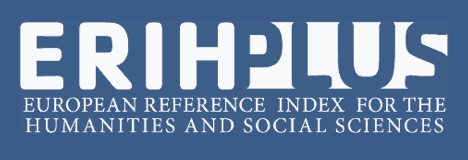Analysis of the floristic differences and the different soil types of roads AM 330 and AM 363, in silves and Itapiranga, Amazonas
Abstract
The main objective of this study was to describe the differences in vegetation typologies in the city of Silves-Amazonas and their relationship with the soil type, around the AM-330 and AM-363 highways. In the field it was observed that the landscape of Silves is composed of two main types of vegetation: the Ombrófila Densa and Campinarana. Thus, the research was carried out from the bibliographical survey related to the area, field research for characterization of vegetation and soil, laboratory activity for analysis and interpretation of satellite images and treatment of soil samples. The results showed that the predominantvegetation is the Ombrófila Densa, which develops mainly on the Yellow Latosol and, secondarily, the Campinarana vegetation, which develops on the Spodosol. In the area with occurrence of Latosol, the occupation is more intense and the development of gullies has been perceived. In the other two soil classes, occupation is on a smaller scale and there was no development of gullies.
References
______. Amazonia Brasileira: um macro domínio. Rio de Janeiro: Alumbramento, 1993.
______. O Dominio Morfoclimático Amazônico. In: ______. Leituras indispensáveis. São Paulo: Ateliê Editorial 2000.
BRASIL, Departamento Nacional de Proteção Mineral, Projeto RADAMBRASIL. Folha S.A-21 Santarém. Geologia, geomorfologia, pedologia, vegetação e uso da terra, Rio de Janeiro, 1976.
BRASIL, Departamento Nacional de Proteção Mineral, Projeto RADAMBRASIL. Folha S.A-21 Santarém. Geologia, geomorfologia, pedologia, vegetação e uso da terra, Rio de Janeiro, 1978.
CHISTOFOLLETI, A. As teorias geomorfológicas. In: Noticias Geomorfológicas, Campinas, 1973.
EMBRAPA. Serviço Nacional de Levantamento e Conservação de Solos (Belém-PA). Avaliação da Aptidão Agrícola do Município de Silves – Estado do Amazonas. Belém, 2003.
GONÇALVES, C.W.P. Amazônia, Amazônias. Contexto, São Paulo, 2001.
IBGE – Instituto Brasileiro de Geografia e Estatística. Manual Técnico de Geomorfologia, 2009.
IBGE. Instituto Brasileiro de Geografia e Estatística – Censo de 2010.
IBGE – Instituto Brasileiro de Geografia e Estatística. Manual Técnico Vegetação, São Paulo, 2012.
LEPSCH, Igo F. 19 Lições de Pedologia. São Paulo: Oficina de Textos, 2011. p. 341-364.
ROSS, Sanches Luciano Jurandir. Geografia do Brasil. São Paulo: USP, 1998.
SOARES FILHO, Britaldo Silveira. Análise de Paisagem: Fragmentação e mudanças. Belo Horizonte: Instituto de Geociências da UFMG, 1998.
SALATI, Enáeas. Modificações da Amazônia nos ultimos 300 anos: suas consequências sociais e ecológicas In: BRITO, Sergio de Salvo. Desafio Amazônico o futuro da civilização dos trópicos. Brasília: Editora Universidade de Brasília/CNPq, 1990.
SELBY. M.j. Hillslope Materials e processes. London: Oxford, 1982.
SUERTEGARAY, D. M.A. Geografia Física (?) Geografia Ambiental (?) ou Geografia e Ambiente (?). In: MENDONÇA, F. Elementos de Epistemologia da Geografia Contemporânea. Curitiba: UFPR, 2005.
VIEIRA, A. F. G. Desenvolvimento e distribuição de voçorocas em Manaus (AM): principais fatores controladores e Impactos urbano-ambientais. (Tese de Doutorado). Universidade Federal de Santa Catarina, 2008.

This work is licensed under a Creative Commons Attribution-NonCommercial 4.0 International License.
Policy Proposal for Free Access Journals
Authors who publish in this journal agree to the following terms:
a. Authors retain the copyright and grant the journal the right of first publication, with the work simultaneously licensed under the Creative Commons Attribution License which allows the sharing of the work with acknowledgment of the authorship of the work and initial publication in this journal.
b. Authors are authorized to take additional contracts separately, for non-exclusive distribution of the version of the work published in this journal (eg publish in institutional repository or as a book chapter), with acknowledgment of authorship and initial publication in this journal.
c. Authors are allowed and encouraged to publish and distribute their work online (eg in institutional repositories or on their personal page) at any point before or during the editorial process, as this can generate productive changes, as well as increase the impact and The citation of published work (See The Effect of Free Access).





















